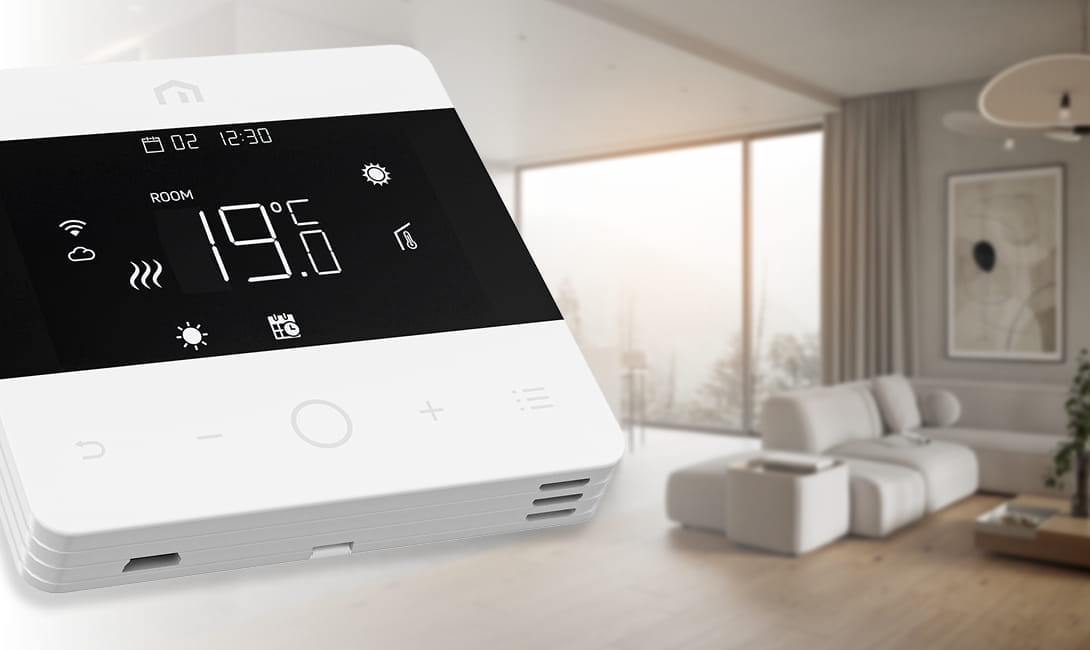- Insights
- Energy saving
The ideal room temperature: does 19 °C suffice?
As soon as it starts to get colder outside, we tend to turn up the heating to stay warm and comfortable inside. This winter, however, things might be different as governments across Europe recommend setting the thermostat to 19 °C in an attempt to battle the energy crisis. But will this adjusted room temperature suffice to keep us comfortable?
The ideal room temperature
First of all, it’s important to note that the ideal room temperature depends on various factors. We often limit thermal comfort to the air temperature, but other environmental and personal factors play a role as well. These include the age, sex and clothing level of the persons in the room as well as the activities they conduct there, humidity, air velocity and the type of room you’re in. Women, for example, generally prefer the room temperature to be a couple of degrees warmer than men. And while the best room temperature for living areas is generally considered to be around 20 °C, this is not ideal for a bedroom or bathroom.Comfortable room temperature
Maintaining a comfortable room temperature might seem self-evident for us because we like to be warm, but this physical comfort is actually more important than you might think. For example, it affects your ability to concentrate, which is especially important in schools and work environments. It also helps us to be happier and more at ease, which in turn has a positive impact on our general wellbeing and productivity.What about health?
In its Housing and Health Guidelines the World Health Organization (WHO) suggests a basic room temperature of 18 °C for healthy and appropriately dressed individuals. For very young children, elderly people and people with an illness, however, the suggested room temperature is 20 °C. The WHO states that if the room temperature is kept within the range of 18 to 24 °C and other factors such as humidity levels are kept within normal levels, there are no health risks for healthy adults with appropriate clothing. If the room temperature does drop below 16 °C and humidity exceeds 65%, this can cause respiratory difficulties and aggravate allergies due to mould formation.Room temperature per room
Most people consider the ideal room temperature to be between 20 and 22 °C, while the guidelines of the WHO suggest a temperature of 18 to 20 °C. Talking about the ideal room temperature, it’s important to bear in mind that different rooms require different temperatures for people to feel comfortable. A temperature of 18 to 22 °C degrees principally applies to living areas where you’re sitting still most of the times, as well as office rooms where you need this temperature to help you concentrate.In a bathroom, however, you need a room temperature between 22 and 24 °C to feel comfortable when you’re undressed and stepping out of a hot shower or warm bath. A bedroom, on the other hand, should be 1 to 2 degrees cooler than the rest of the house since our body temperature drops when we sleep and a cooler room temperature helps us to maintain our body’s temperature regulation so that we can get a good night’s sleep. The ideal temperature here lies between 16 and 18 °C.
Does a room temperature of 19 °C suffice?
As you’ll gather by now, the answer to the question ‘Does a room temperature of 19 °C suffice?’ is not as straightforward as a simple yes or no. Depending on the room you’re talking about, the people in it and environmental factors, such as the amount of moisture in the air, thermal comfort will differ.With a substantial amount of humidity, for example, you’ll most likely still feel warm at a lower room temperature. The lower the moisture levels, the higher the room temperature should be. Insulation also plays an important role. If your walls aren’t insulated and it’s 0 °C outside, you can set the thermostat to 20 °C but the interior side of the wall will only get to 12 °C, resulting in a ‘feels like’ temperature of about 16 °C.
What about costs?
In principle, each degree in room temperature accounts for 6% of the heating costs. So, lowering the temperature from 23 to 19 °C can already help to save almost a quarter of the total heating costs. Depending on the size of the housing unit or commercial building, the savings can amount to several hundred euros per year.Conclusion
We’ll conclude that a room temperature of 19 °C can suffice this winter for living areas, office rooms or schools, provided that humidity levels are right, the building is properly insulated and you have an efficient heating system. Overnight, from 11 pm to 6 am, 18 °C can even suffice. For bathrooms, though, a room temperature of 19 °C won’t be enough but you can easily boost the temperature there by combining underfloor heating with a towel rail or an electric radiator.If you have any questions about efficient heating and energy saving, don’t hesitate to get in touch.

